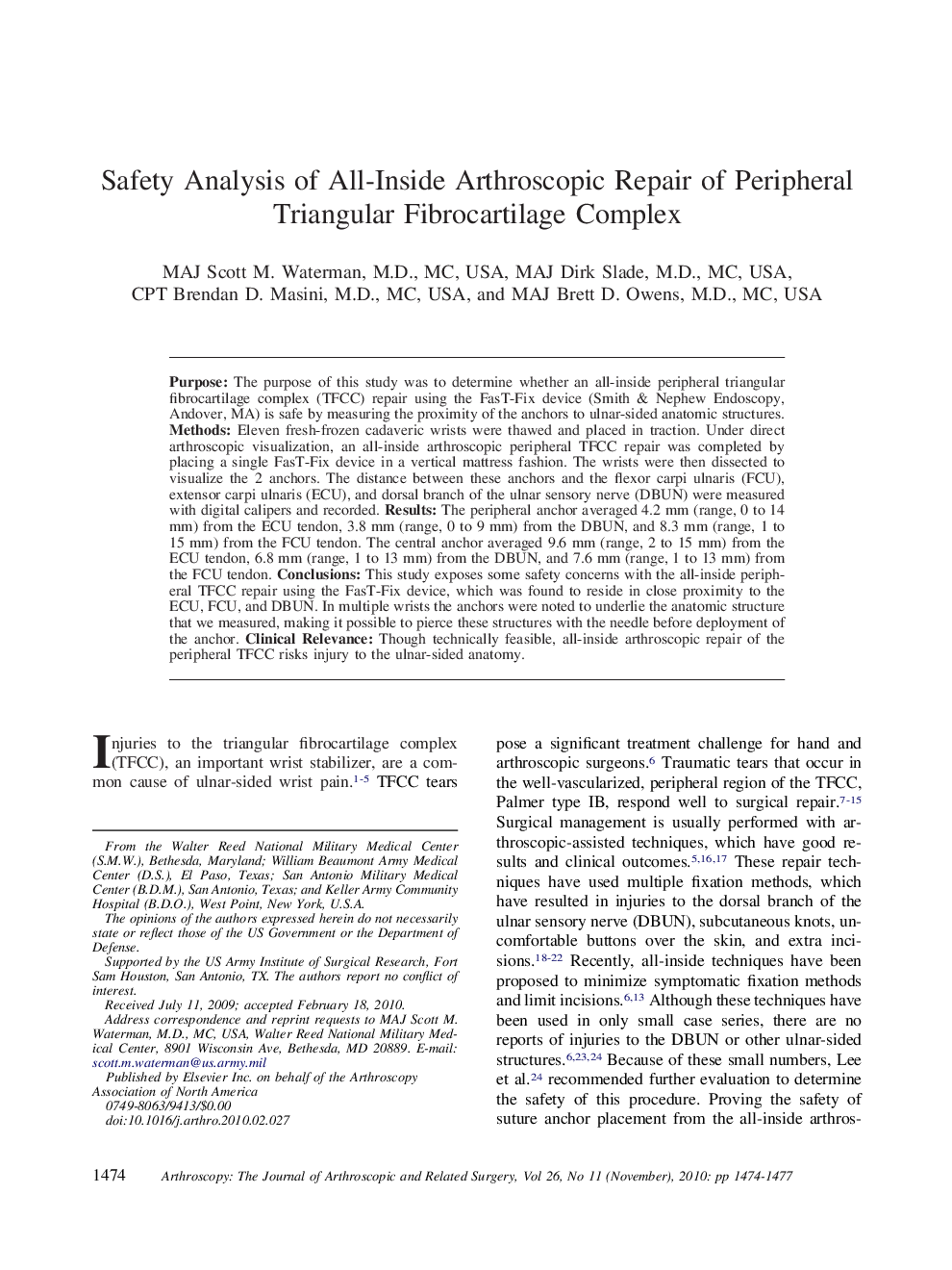| Article ID | Journal | Published Year | Pages | File Type |
|---|---|---|---|---|
| 4045053 | Arthroscopy: The Journal of Arthroscopic & Related Surgery | 2010 | 4 Pages |
PurposeThe purpose of this study was to determine whether an all-inside peripheral triangular fibrocartilage complex (TFCC) repair using the FasT-Fix device (Smith & Nephew Endoscopy, Andover, MA) is safe by measuring the proximity of the anchors to ulnar-sided anatomic structures.MethodsEleven fresh-frozen cadaveric wrists were thawed and placed in traction. Under direct arthroscopic visualization, an all-inside arthroscopic peripheral TFCC repair was completed by placing a single FasT-Fix device in a vertical mattress fashion. The wrists were then dissected to visualize the 2 anchors. The distance between these anchors and the flexor carpi ulnaris (FCU), extensor carpi ulnaris (ECU), and dorsal branch of the ulnar sensory nerve (DBUN) were measured with digital calipers and recorded.ResultsThe peripheral anchor averaged 4.2 mm (range, 0 to 14 mm) from the ECU tendon, 3.8 mm (range, 0 to 9 mm) from the DBUN, and 8.3 mm (range, 1 to 15 mm) from the FCU tendon. The central anchor averaged 9.6 mm (range, 2 to 15 mm) from the ECU tendon, 6.8 mm (range, 1 to 13 mm) from the DBUN, and 7.6 mm (range, 1 to 13 mm) from the FCU tendon.ConclusionsThis study exposes some safety concerns with the all-inside peripheral TFCC repair using the FasT-Fix device, which was found to reside in close proximity to the ECU, FCU, and DBUN. In multiple wrists the anchors were noted to underlie the anatomic structure that we measured, making it possible to pierce these structures with the needle before deployment of the anchor.Clinical RelevanceThough technically feasible, all-inside arthroscopic repair of the peripheral TFCC risks injury to the ulnar-sided anatomy.
